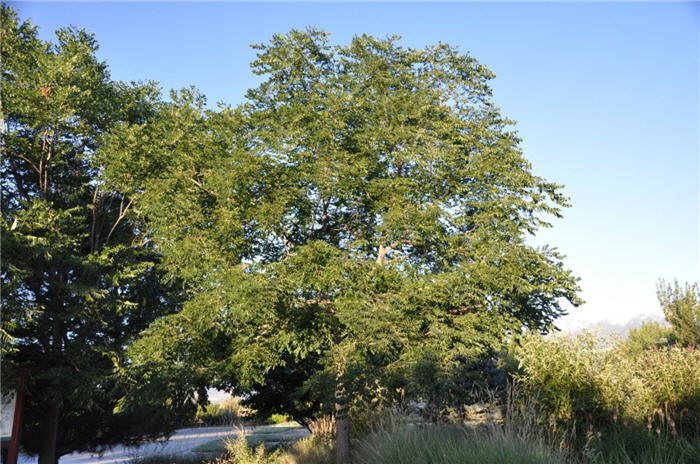| Botanical Name: Gymnocladus dioicus | |
| Common Name: Kentucky Coffeetree |

-
Anatomy
-
Culture
-
Design
Plant Type
Tree
Height Range
40-60'
Flower Color
n/a
Flower Season
n/a
Leaf Color
Blue Green
Bark Color
Brown, Grey
Fruit Color
Brown
Fruit Season
Winter, Fall, Persistent
Sun
Full
Water
Low
Growth Rate
Moderate
Soil Type
Sandy, Clay, Loam, Rocky, Unparticular
Soil Condition
Average, Rich, Poor, Well-drained, Dry
Soil pH
Acid, Neutral, Basic
Adverse Factors
Messy
Design Styles
Mediterranean, Ranch, Spanish, Tropical, Woodland
Accenting Features
Silhouette
Seasonal Interest
Winter, Spring, Summer, Fall
Location Uses
Background, Lawn, Park, Parking Lot, Roadside, Street Tree
Special Uses
Screen, Shade Tree
Attracts Wildlife
n/a
Information by: Stephanie Duer
Photographer: Linda Engstrom
Photographer: Linda Engstrom
-
Description
-
Notes
Kentucky Coffeetree is a wonderful, durable, under-utilized deciduous tree that grows 45 to 60 feet tall and 25 to 40 feet wide. It is narrow in its youth, almost gawky, but grows into a broad, picturesque tree with age. The huge compound bluish green leaves emerge late in the spring, and have a tropical look. It has an open, airy canopy that casts a dappled shade. Female trees bear long, slender seed pods that create a contrasting texture among the leaves. For landscapes where the pods would be considered a nuisance rather than an ornamental feature, choose a male selection such as ‘Espresso.’
Grow in full sun and well drained soil. Kentucky Coffeetree is adaptable to a wide range of growing conditions including alkaline soils, drought, heat, cold, and road salts. No insects and disease issues. Widespread across Eastern North America but common nowhere, it ranges as far west as Oklahoma and Nebraska and north to Ontario and south to Tennessee. Hardiness is USDA Zone 4. A legume, it fixes nitrogen and so thrives in poor, unfertile soils. The pods are a crafters delight.